Katarina Komazec is a cruise & travel blogger and the owner of the website Adventour Begins since June 2020. Having worked more than 7 years in the cruise industry, first as Concierge and then in the Shore excursions department Rivages du Monde, Viking River Cruises, Royal Caribbean International), Katarina has gained priceless, inside knowledge about the ports of call and cruise ports’ shore excursions. She has started a blog with the aim of providing the readers with authentic, detailed information on the best port experiences they can get on a cruise. On Katarina’s website www.adventourbegins.com, the reader can find useful cruise tips & port information from a perspective of a cruise ship employee and a shore excursions expert.
Historic. Captivating. Complex.
Welcome to Belgrade, the capital of Serbia, the gate between the East and the West and “the ugliest city in the most beautiful place in the world”, as the French architect Le Corbusier described it. Belgrade is a contrasted city with many wounds that have made it resilient, a city of Christian martyrs and heroes who have made it rise from the ashes hundreds of times during its long, complicated history.
A city-phoenix was founded by Celts in the 3rd century BC as “Singidunum” (the city of Celtic tribe Scordisci), on the ridge overlooking the confluence where the Sava river kisses the Danube. The position of Belgrade is said to be among the four most strategic geographical positions in the world, which might explain its fate of being the battleground where the world’s most powerful empires confronted and each of them left their mark.
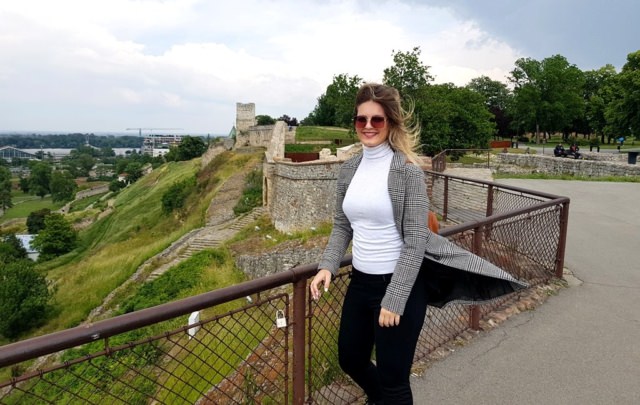
Photo courtesy of Katarina Komazec
During its history, Belgrade changed hands many times between the Romans, Bulgarians, Byzantines, Ottomans, Austro-Hungarians, and others. Upon the Slavs’ arrival in the early 6th century, the city was named “Beligrad” (Beograd), meaning the “White City”, referring to the fortified city walls built of the white limestone that the Slavs first spotted upon approaching the ridge from the river. The name of the city remained however, Belgrade has been anything but white ever since.
Belgrade was razed to the ground and completely rebuilt 44 times, and has seen over 115 wars. Despite that, Belgrade’s main strength has always lied in its uniqueness and authentic Slavic spirit preserved throughout centuries. Nowadays, the “white city” is a colorful blend of diverse influences and marks left by the world’s biggest civilizations, a rich Serbian and Christian historical and cultural heritage, and a cosmopolitan spirit that can be compared to the leading European metropolis. Both ancient and modern, it is today one of the fastest-growing cities in the Balkans and Europe and more and more attractive tourist destination.
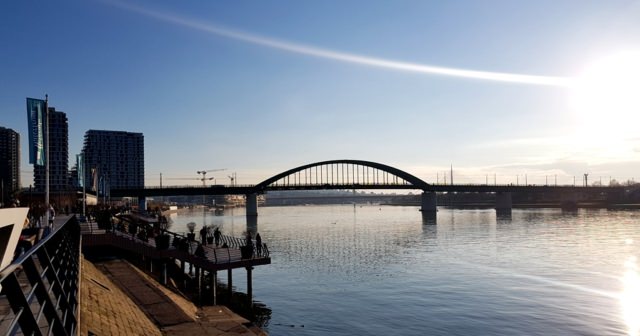
Photo courtesy of Katarina Komazec
VISIT BELGRADE ON A RIVER CRUISE
The city of Belgrade lies on the Danube river and is a frequent river cruise destination. The ships usually stay in Belgrade one day, and half-day guided tours are organized for the cruise passengers. One of the main advantages is that ships dock in the very heart of the city, at the foot of the Belgrade Fortress – the city’s live encyclopedia and mute testimony to the history of Belgrade since its foundations.
As a Belgrade native and an ex-river cruise employee, in this article I guide you through the most important spots in Belgrade you must visit during your stay. I narrowed down my list to the places you can visit by walk, so you don’t have to worry about getting around the city in a taxi. Belgrade has become a very crowded place and many areas are under construction, so I wouldn’t recommend wasting time driving around when you can visit some of the major landmarks on foot.
However, if you decide to navigate the city by taxi, make sure you don’t overpay as the taxi fares are quite low (they shouldn’t charge you more than 600-800 dinars/6-8 € anywhere you go in the city center).
Belgrade Fortress
The core of the city and the place where the history of Belgrade started, Belgrade Fortress (also referred to as Kalemegdan fortress) is situated on the 125-meter-high (410 ft.) cliff dominating the confluence of the Sava and the Danube rivers, and the vast Pannonian Plain in the north of Serbia. It consists of the Upper and Lower Town where the old citadel used to be, and Kalemegdan Park, an extensive area that fully developed in the 19th century, comprising museums, exhibitions, monuments, cultural institutions, and recreational areas.

Photo courtesy of Katarina Komazec
Belgrade Fortress was destroyed and rebuilt many times. It is a vast open-air museum where you can find fortifications, monuments, edifices, gates, towers, and ruins of the ancient city dating from different periods of history. There are parts of the castrum and walls dating from the Roman period, however the biggest traces date from the age of the Ottoman Empire, Austro-Hungarian Empire, and the Serbian Despotate – The Serbian medieval state in the early 15th century.
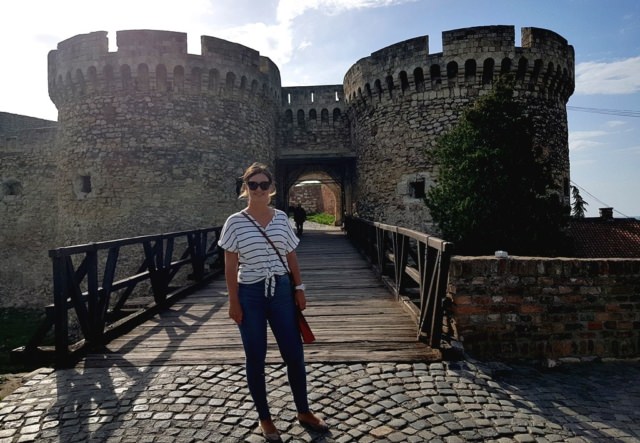
Photo courtesy of Katarina Komazec
Although Belgrade became Serbian for the first time in the 13th century during the reign of the Serbian king Stefan Dragutin, it wasn’t until the prince and the despot Stefan Lazarević, one of the most prominent, educated, and remarkable people of his time built the castle and the new fortress from scratch and declared Belgrade the capital of Serbian Despotate in 1404.
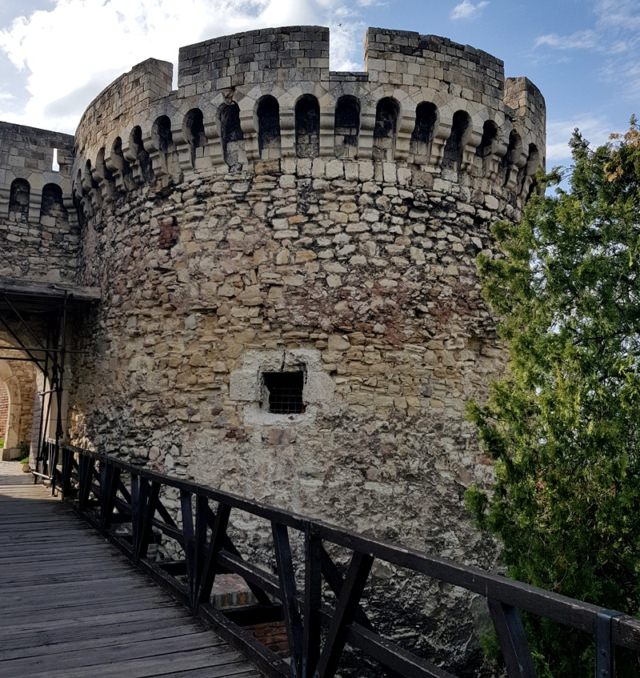
Photo courtesy of Katarina Komazec
Belgrade under prince Stefan Lazarević developed into a modern, progressive city and today the imposing walls and towers such as Despot Stefan Tower (or Dizdar Tower), Despot’s Gate, and Zindan Towers can be admired as the most impressive and beautiful examples of Stefan’s rule.
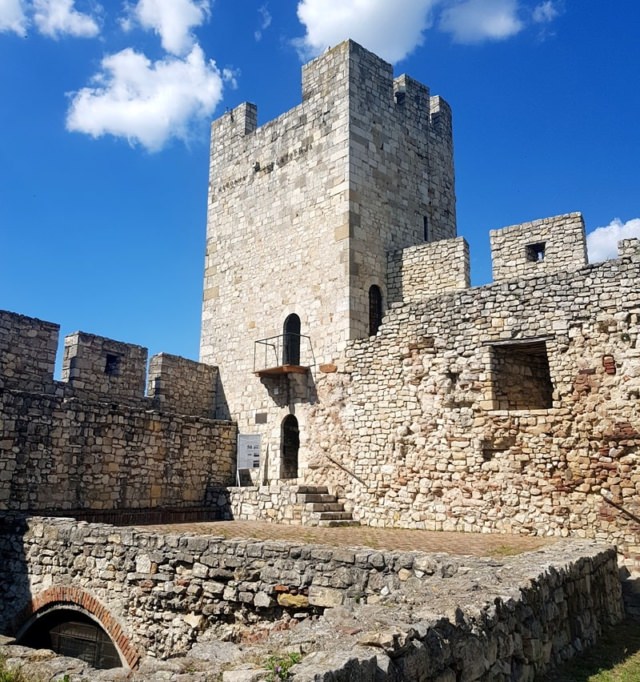
Photo courtesy of Katarina Komazec
After the death of Stefan, the capital of Serbia moved to the city of Smederevo, and Belgrade was conquered in 1521 by the Ottomans (Suleiman the Magnificent). The following centuries were marked by Austro-Ottoman wars, until 1867 when the Turkish commander of Belgrade handed over the keys of the town to the Serbian prince Mihailo Obrenović.
Nowadays, on your walk through the Belgrade Fortress, you can spot the monuments from the Ottoman era, such as Mehmed Paša Sokolović’s Fountain and Damar Ali Pasha’s Turbeh, as well as those from the Baroque Austro-Hungarian age, such as the Baroque Gate complex including a beautiful Clock Gate and Clock Tower.
Belgrade Fortress also hides the remains of an underground city, and time-permitting, you can take an underground tour and visit the Roman well, Tito’s military bunkers, Austrian gunpowder storehouse with Roman sarcophagi, tombstones, and more. It takes a full day to properly explore Belgrade Fortress and Kalemegdan Park, and the ship sightseeing tours normally include a visit to the fortress.
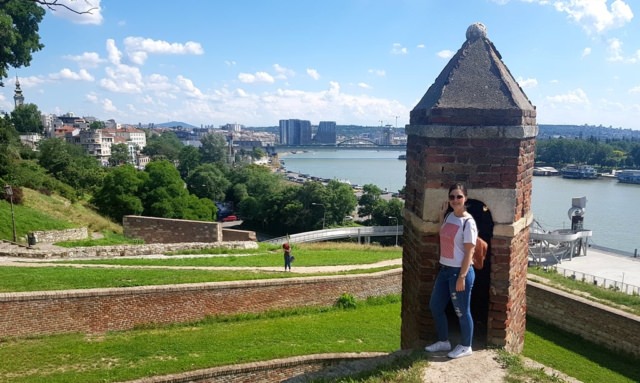
Photo courtesy of Katarina Komazec
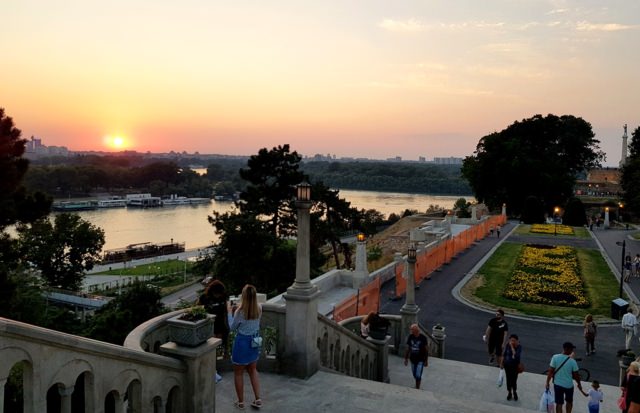
Photo courtesy of Katarina Komazec
On your tour, you’ll visit The Victor, a 14-meter (46 ft.) high monument built in 1928 to commemorate Serbia’s victory over the Austro-Hungarian Empire in World War I. The stone statue of a nude young man holding the falcon in one hand, and a sword in another (symbols of war and peace) caused a scandal when it was first erected in the center of the city. It was believed that the nude statue of a man would damage the morale of Belgrade ladies, so shortly after that, the monument was moved to the hilltop overlooking the confluence and the Pannonian Plain where it stands today.
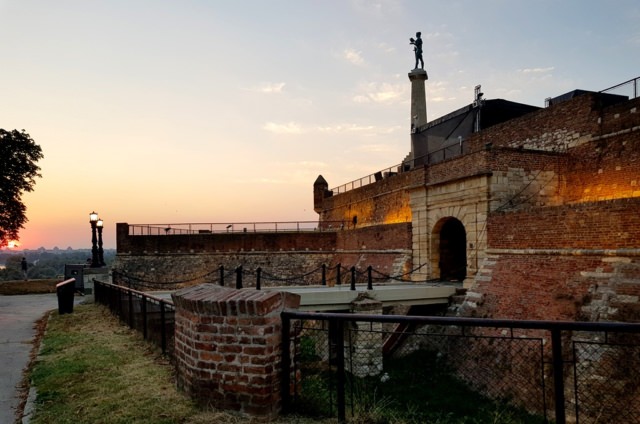
Photo courtesy of Katarina Komazec
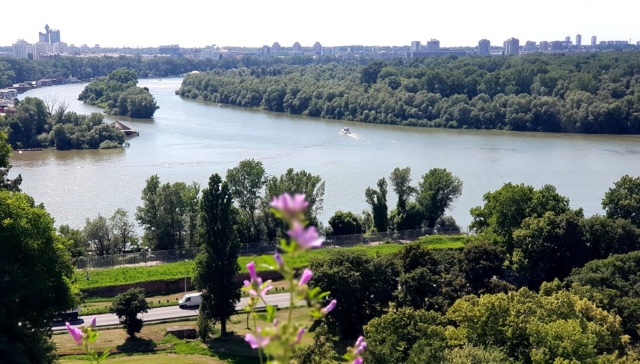
Photo courtesy of Katarina Komazec
However, there are two other remarkable spots and hidden gems of Belgrade Fortress, located within less than a 10-minute walking distance from the Victor: The Ružica Church and the Saint Petka’s Chapel. Tours normally don’t include a visit to the two churches, but if you have some free time, I highly recommend you visit.
Tucked behind the Despot’s Gate and Zindan Towers, the Ružica Church (“Little rose church”) is a Serbian Orthodox church whose origins date back to the early 15th century when the original church was built. Dedicated to the Nativity of Mary, the church shared the destiny of Serbian people in Belgrade and was destroyed and rebuilt many times. It was completely reconstructed in 1925, and nowadays, besides stunning icons, frescoes and paintings, visitors can admire valuable artworks made entirely of the melted war materials (chandeliers, candelabra, relief-type icons made of metal).
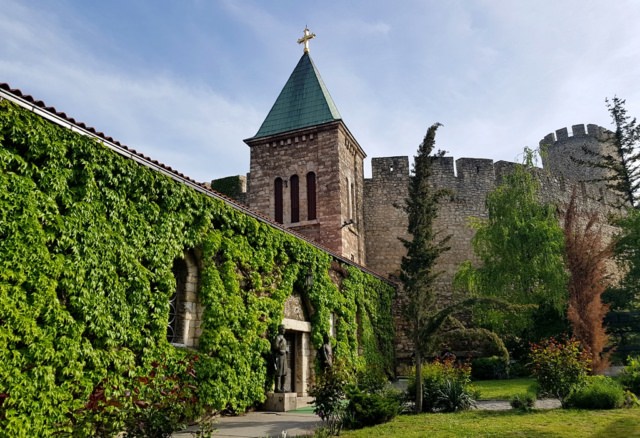
Photo courtesy of Katarina Komazec
The church is situated between the fortress and the “miracle” water spring of Saint Petka, whose healing powers made it an important pilgrimage site for people of all confessions.
The Saint Petka’s Chapel, a small, modest, yet stunning church with incredible energy, was built near the water spring and houses the Saint’s relics. You can take the Holy water from there, visit the beautifully decorated interior, worship and enjoy the peace far from the bustling city center. You can also stroll around and take in the breathtaking views of the rivers and the Lower Town of the Belgrade Fortress.
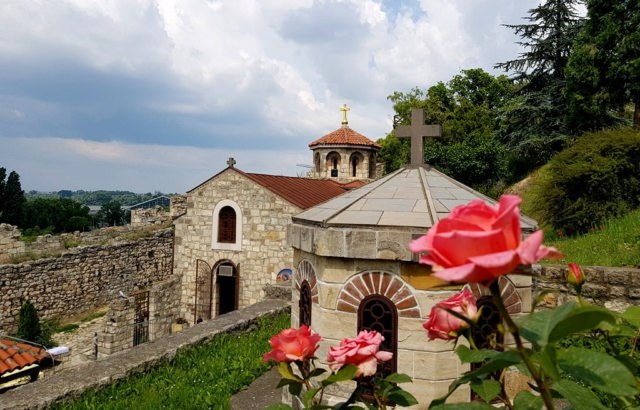
Photo courtesy of Katarina Komazec
Kalemegdan Park and the fortress offer a wide variety of other places to visit (Monument of Gratitude to France, the Military Museum, the Belgrade Zoo, Cveta Zuzorić Art Pavillion…), as well as extraordinary lookout points of the confluence.
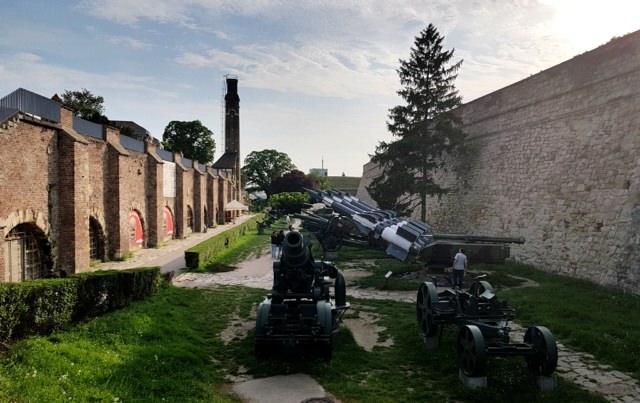
Photo courtesy of Katarina Komazec
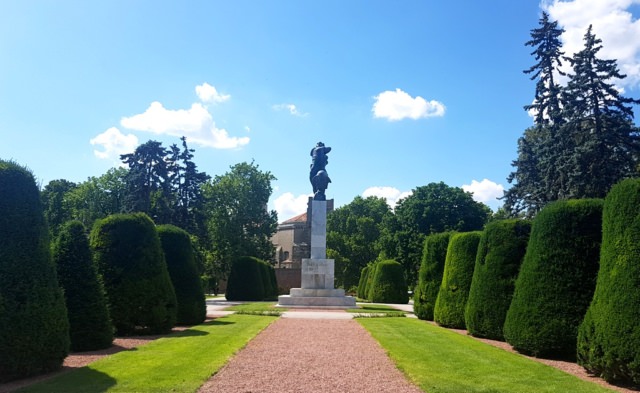
Photo courtesy of Katarina Komazec
Once you’re there, you’ll understand the strategic importance of the place and its fate throughout centuries. From Kalemegdan, you can easily access Knez Mihailova street, the main pedestrian street in Belgrade.
Knez Mihailova Street (Prince Michael’s street)
The main pedestrian and shopping street in Belgrade, Knez Mihailova street is long around 1 km (0.6 mi), and got its name after Prince Mihailo Obrenović. It stretches between the Kalemegdan fortress at one end, and the Republic Square and Terazije Square on the opposite side. To get there directly from the port, you need to walk 15 minutes somewhat uphill, and once you reach it, everything is flat and you can start your exploration.
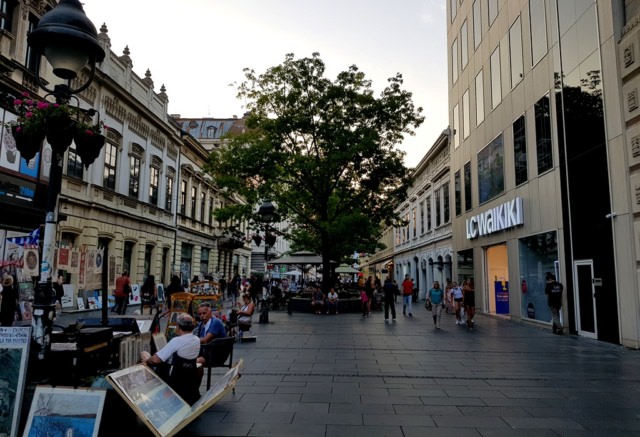
Photo courtesy of Katarina Komazec
Knez Mihailova street is packed with restaurants, cafes, brand stores, a shopping mall, some souvenir shops, fountains, several monuments, and street performers. During your walk, make sure you take a glimpse of the beautiful facades dating from the late 19th and 20th centuries. In the past, this used to be a prestigious residential area populated by notable writers, politicians, lawyers, bankers, merchants, and today you can admire their houses and palaces housing some important cultural institutions, such as the exceptional building of The Serbian Academy of Sciences and Arts building, built it academic style with elements of secession. Other buildings in Knez Mihailova street feature Art Nouveau, Art Deco, Romanticism, Renaissance styles with several different architectural elements.
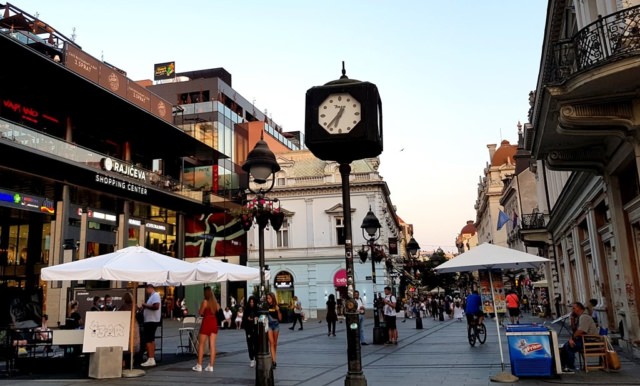
Photo courtesy of Katarina Komazec
However, what makes the street special is the positive vibe and the energy you get to feel at every single step. If you decide to eat or have a drink here, you can do so as well – the prices are reasonable, the offer is various, food delicious and you can pay in dinars or by card almost everywhere. Euros are normally not accepted, but there are numerous exchange offices all over the place, so you won’t have difficulty getting around.
The Republic Square
At one end of Knez Mihailova street, you’ll come across a spacious flat area of the Republic Square, dominated by the Equestrian statue of Prince Mihailo, erected in the 19th century.
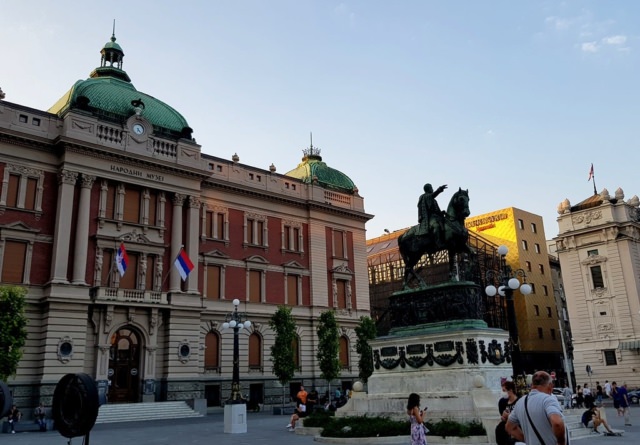
Photo courtesy of Katarina Komazec
The square is surrounded by two other remarkable buildings: The National Museum of Serbia, a monumental building that recently re-opened (after being 15 years under reconstruction!), containing 34 valuable archaeological, numismatic, historical and artistic collections today, and the exquisite building of The National Theatre of Belgrade, dating from 1868, featuring drama, opera, and ballet ensembles.
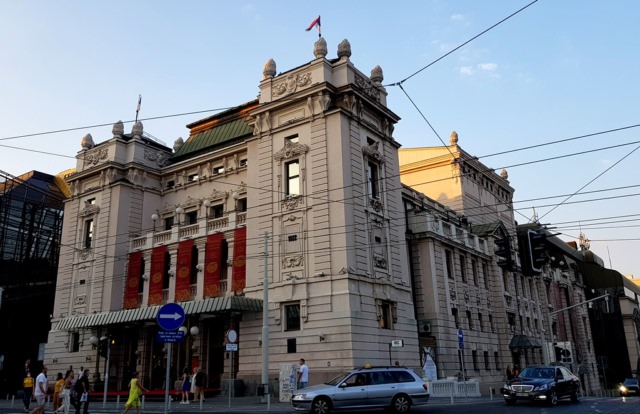
Photo courtesy of Katarina Komazec
There are several restaurants and cafes at Republic Square, as well as benches to sit and relax. The square has recently been reconstructed, and although the majority of Belgraders disapprove of its new look, it has remained the favorite meeting spot in the city and the place where many events take place.
Skadarlija District
A five-minute walking distance from Republic Square, there is another must-visit street in Belgrade: Skadarska street, commonly known as the Skadarlija district. It is a bohemian quarter of the city, often compared to Paris’ Montmartre. Originally a Gipsy quarter, Skadarlija began to acquire its bohemian character in the late 19th century when the area was rebuilt and populated by prominent writers, artists, and actors. More than 15 kafanas (traditional Serbian taverns) were built and many of them are still open today, such as “Tri šešira” (Three hats), “Dva jelena” (Two Deer), “Zlatni bokal” (The Golden Chalice), and many others.
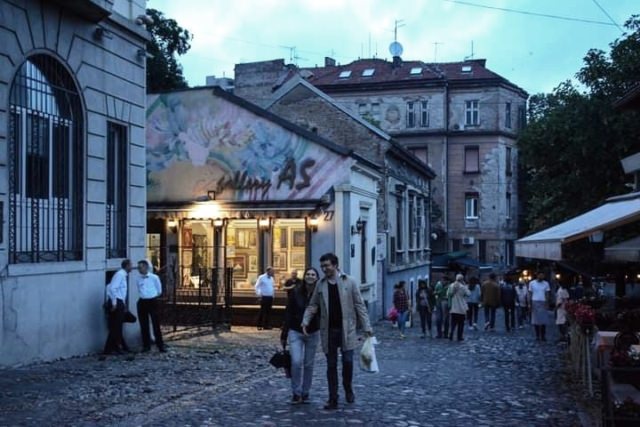
Photo courtesy of Marjana Jovanovic
Skadarlija is a cobblestone street and besides restaurants and kafanas, it features art galleries, antique and souvenir shops, fountains, several hotels, and one of the most unique stores in Serbia – Damar Tartufi shop, which specializes in selling Serbian truffles and truffle products (yes, you heard well – Serbia is full of truffles).
Skadarlija is one of the most touristy areas in the city, very lively and animated in the evening, full of “tamburaši” (tambura players), playing and singing traditional songs, and restaurants offering delicious Serbian and international food.

Photo courtesy of Katarina Komazec
However, despite being a popular tourist attraction, Skadarlija street has preserved the authentic bohemian spirit. Behind the walls of Skadarlija buildings, the most valuable paintings were painted, and in its kafanas the most beautiful novels and poems were written. It is one of the most enjoyable areas in the city and a must-visit place on your Belgrade journey.
Terazije Square
Terazije avenue connects Knez Mihailova and Knez Milanova streets and represents one of the central hubs of the city. Although officially classified as a square, it is actually an avenue featuring a great variety of cultural, historical, and political institutions housed in richly decorated buildings dating from the 19th and 20th centuries. Here, you can visit the famous Terazije fountain and sumptuously decorated hotels with over a century-old tradition (Hotel Moskva is the most representative example), you can browse stores, restaurants, and cafes, or get lost in the shopping alleys such as Čumićevo sokače (Belgrade design district) where you can find authentic hand-made clothes, artwork, and handicraft.
The House of the National Assembly of Serbia
At only 5 minutes’ walk from Terazije, you can spot the stunning, imposing building of the National Parliament of Serbia, designed in beautiful neo-baroque style, a historic structure that outlived 5 states since its founding: The Kingdom of Serbia (1882-1918), the Kingdom of Serbs, Croats and Slovenes (1918-1929), the Kingdom of Yugoslavia (1929-1943), the Socialist Federal Republic of Yugoslavia (1945-1992), the Federal Republic of Yugoslavia (the State Union of Serbia and Montenegro, 1992-2006). Today, it houses the National Assembly of the Republic of Serbia and is one of the most impressive buildings in Belgrade.
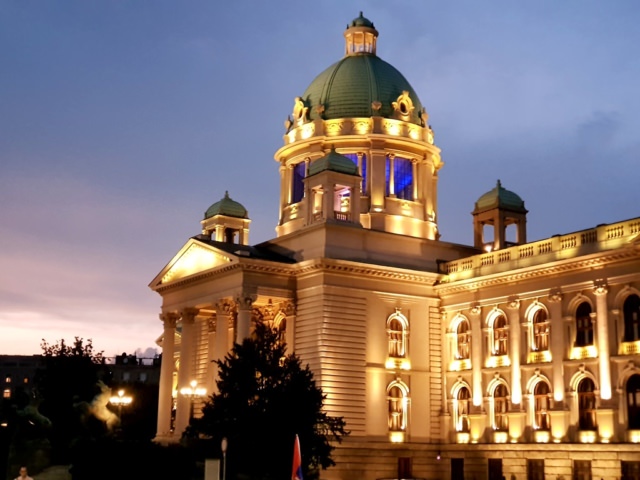
Photo courtesy of Katarina Komazec
The construction of the imposing building started in the early 20th century and lasted for several decades. It was built in neo-baroque style in architecture, and the interior is lavishly decorated in academic traditional style.
Across the National Parliament, there is a spacious area of Pionirski park (Pioneers Park), a green oasis in the middle of the buzzing city center, as well as and two outstanding palaces: the 19th century Old Palace, a former royal residence of the Obrenović dynasty that nowadays houses The City Assembly of Belgrade, and the New Palace, a former royal residence of the Karađorđević dynasty that today houses the seat of the President of Serbia.
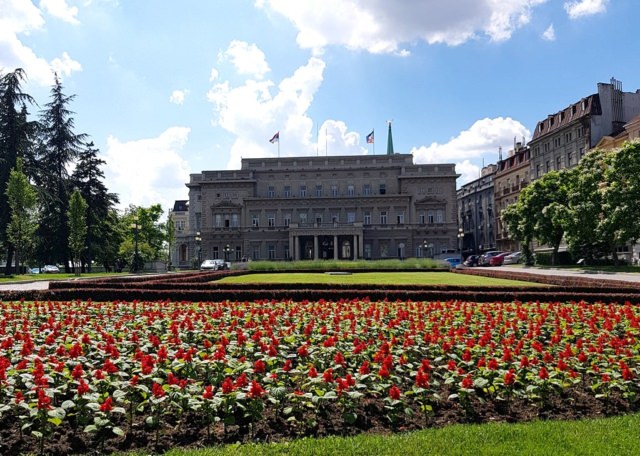
Photo courtesy of Katarina Komazec
Wandering around the National Parliament area, look up at the surrounding buildings and you’ll see that some of them are not that pretty. Actually, you’ll see an extreme contrast in architecture.
Dominating the Nikola Pašić square (easily spotted due to the monument of Nikola Pašić, a 19-20th century politician and an important historic figure), you’ll see a huge building of Dom Sindikata (Trade Union Hall), dating from the Communist period and built in the style of Socialist realism. A lot of important cultural and political events took place here, and today it is a multi-purpose building that was renamed Kombank Hall in 2018. Right next to it, the massive building of Borba is another example of Communist architecture, large in volume, designed to show the domination and political power of Josip Broz Tito’s rule.
On the opposite side, another immense, yet magnificent building – the Palace of the Main Post Office, dating from the first half of the 20th century, represents the blend of architectural styles and artistic tendencies that reflect the general atmosphere in the society in between the two World Wars.
Behind the Post Office building, you’ll come across another beautiful, spiritual gem – St. Mark’s Church, a Serbian Orthodox church situated in the Tašmajdan park, built in a remarkable Serbo-Byzantine style between 1931 and 1940. Until the Church of Saint Sava surpassed it, the St. Mark’s Church used to be the largest Serbian church. The 14th-century Gračanica monastery located in Kosovo and Metohija served as a model for St. Mark’s Church, and today this important religious building houses the marble tomb of Serbian Emperor Stefan Dušan, one of the most powerful monarchs in southeast Europe in the 14th century.
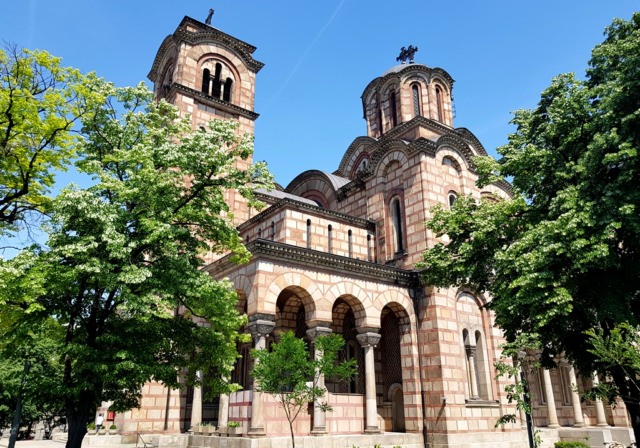
Photo courtesy of Katarina Komazec
The whole area surrounding the National Parliament is easily accessible from the port. It takes around 20-30 minutes to reach the Terazije Square and the National Parliament on foot. This is a busy part of the city, and you won’t need more than half an hour to walk around. Relax at one of the parks, take some nice pictures and visit the St. Mark’s Church time-permitting. There is no entrance fee (none of the Serbian churches have an entrance fee) and is usually not crowded.
The Church of Saint Sava
The iconic symbol of Belgrade and the Serbian holiest sanctuary, the Temple of Saint Sava is the largest Serbian Orthodox Church and an architectural icon that ranks among the largest orthodox churches in the world. It sits on the Vračar plateau and is dedicated to Saint Sava, the founder of the Serbian Orthodox Church and an important spiritual and historical personality.
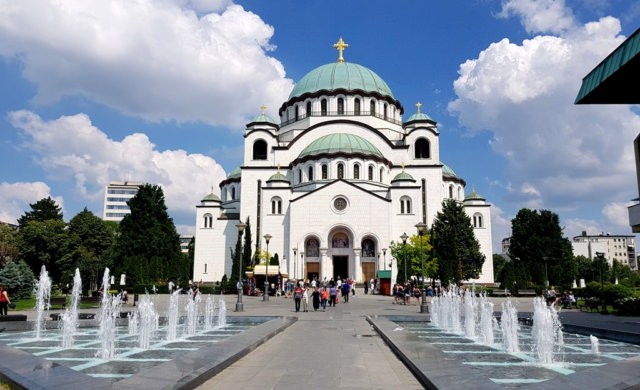
Photo courtesy of Katarina Komazec
Saint Sava was the youngest son of Prince Stefan Nemanja, the founder of the Nemanjić dynasty that ruled Serbia from 1166 to 1371. Born as Rastko Nemanjić, Saint Sava was a Serbian prince, an Orthodox monk, the first Archbishop of the Autocephalous Serbian Church, and a diplomat who contributed to the creation of a powerful medieval Serbian state. He is widely considered as one of the most significant historical figures and the patron saint of Serbs, Serbia, and Serbian education.
Throughout centuries, under the Ottoman occupation, the faith and the cult of Saint Sava lived among Serbian people as their spiritual guidance and the pillar of Orthodox faith. To prevent that, Ottomans burnt Sava’s remains in 1594 on the Vračar plateau, but they didn’t expect that such an act would only strengthen the Serbian resistance, their faith, and the cult of the Saint.
That’s how centuries later, the Serbs decided to build the largest of all Serbian temples and dedicate it to Saint Sava. The first stone was laid in 1935. However, during the WWII and Communist era, the construction of the church was obstructed and used as a depot by the German army and Tito’s partisans. After Tito’s death, the construction continued and in 1989 the concrete dome of the temple, weighing 4.000 tonnes and constructed entirely on the ground, was raised to its current position. Built in Serbo-Byzantine style, the church is 82 meters tall (including a golden, 12-meters tall golden cross) and can accommodate up to 10.000 people.
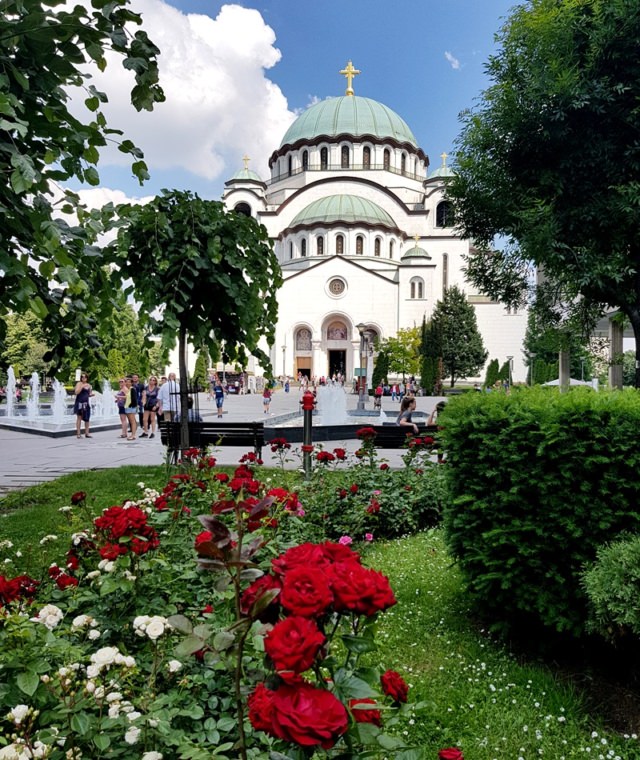
Photo courtesy of Katarina Komazec
Due to the lack of finances, it took decades to decorate the interior of the church. However, today, the interior of the church adorned with 12.000 m2 (130,000 sq ft) of gold mosaics is almost finished. The Russian Federation has financed the whole project that took almost 5 years to complete, and the major Russian artists from the Imperial Academy of Arts have worked on the mosaics. Pure gold, silver, and other precious materials have been used to create this monumental architectural marvel and one of the most breathtaking Orthodox temples in the world.
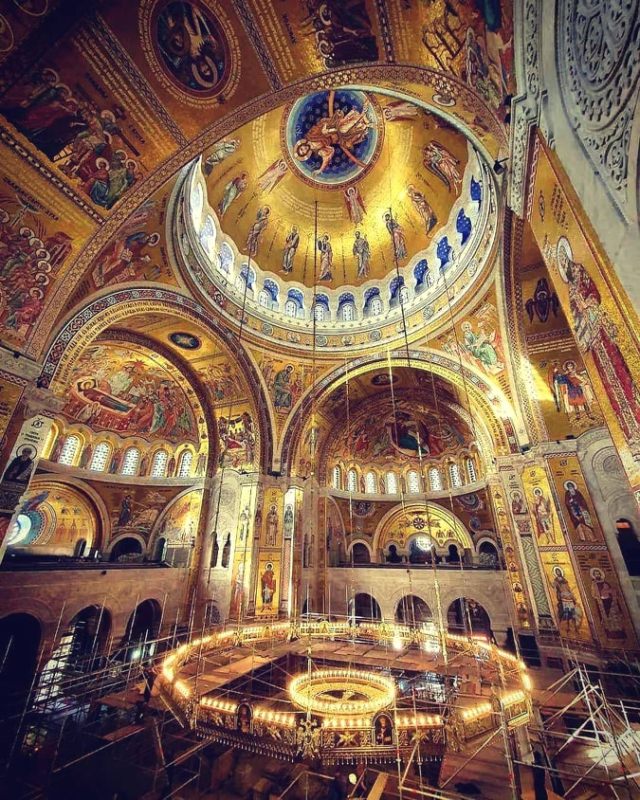
Photo courtesy of Katarina Komazec
The Saint Sava temple also consists of an impressive crypt situated in an underground area, sumptuously decorated, featuring Serbian religious paintings, frescoes, icons, an exhibition area, and the burial church, dedicated to the Holy Prince Lazar. On November 21, 2020, Irinej, the 45th Patriarch of the Serbian Orthodox Church, was buried in the crypt.
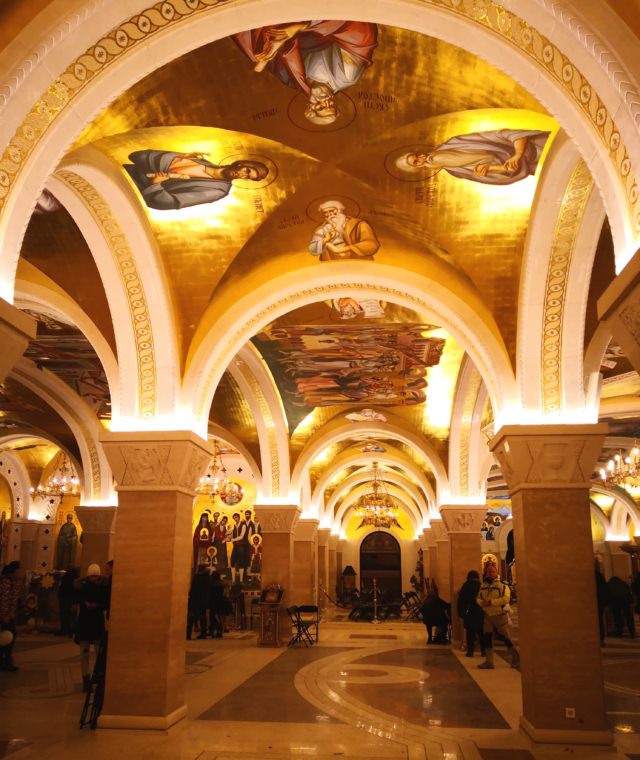
Photo courtesy of Jelena Petojevic
Sightseeing tours organized by cruise ships include the visit to Saint Sava church. Don’t miss it out, as it’s truly magnificent and will blow your mind.
However, if you decide to explore it independently, it takes around a-40 minute easy walk (3.3 km; or 2 mi) to get to the church from the port. On the way there, you’ll pass through Knez Mihailova street, Terazije street, and Slavija Square, the major intersection featuring the largest music and light fountain in Serbia. The Saint Sava Church dominates the city landscape – located on the Vračar plateau, at 134 m height, it is easily spotted from a lot of spots in Belgrade city center.
Belgrade Waterfront
Last but not least, Belgrade Waterfront is the recent urban renewal development project designed to revive the right bank of the Sava river. Cruise ships normally dock at the stone’s throw from there, so you can enjoy the state-of-the-art city panorama and a beautiful promenade offering unique views of the river and Belgrade’s bridges. Although the large area is still under construction, the whole project includes office and luxury apartment buildings, Belgrade Park, Waterfront Promenade, five-star hotels, Belgrade Tower (with its 40 stores will be the tallest skyscraper in Belgrade), “Galerija” shopping mall (the largest one in southeastern Europe), and more.
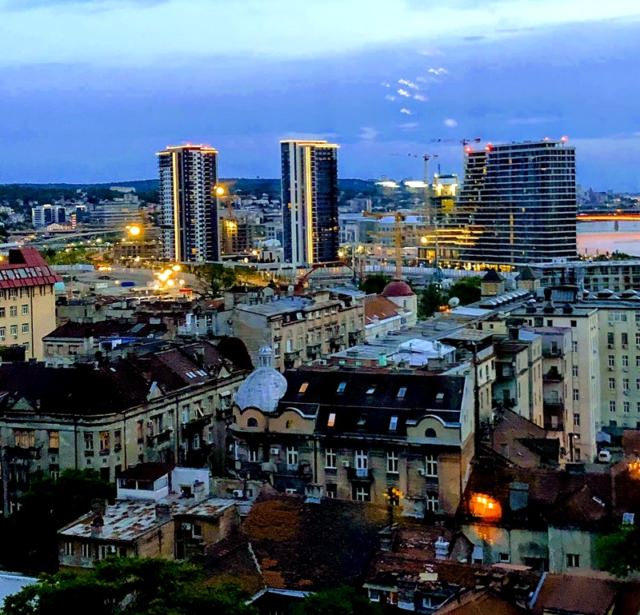
Photo courtesy of Aleksandra Radulovic Naumovic
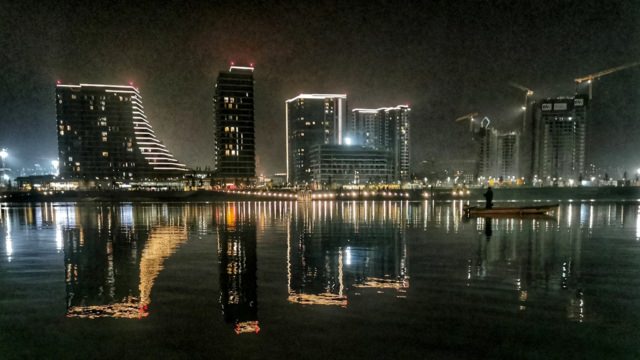
Photo courtesy of Jelena Petojevic
To Wrap Up
It is not an easy task to put Belgrade in words, because it is one of those cities that you need to feel. Some people find it beautiful, some say it’s too grey, but all claim one thing: Belgrade is intriguing, fun, warm, and welcoming. Amazing food (and cheap compared to other European cities), friendly locals, turbulent history, and plenty of places to visit and enjoy, make Belgrade the most visited Balkans capital.
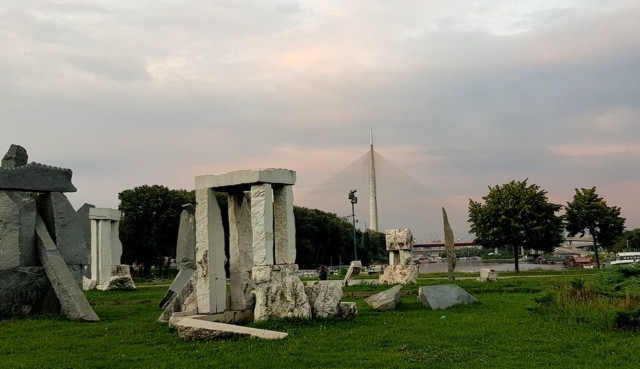
Photo courtesy of Katarina Komazec
It boasts a rich cultural and nightlife scene that you can particularly witness if your ship stays in port until midnight – packed bars, splavs (floating clubs on the banks of the Sava and the Danube rivers), kafanas and cafes make you wish to stay longer. Right next to your ship, there is the area called “Beton Hala”, lined with clubs, restaurants and bars overlooking the river, so you can grab a quick bite before heading back on board.
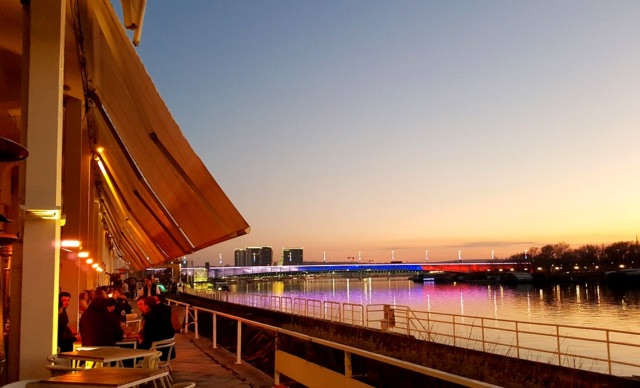
Photo courtesy of Katarina Komazec
In case you haven’t visited Belgrade so far, I highly recommend you put it on your bucket list. You’ll find it unique in many ways, vibrant, dynamic, and different compared to other European capitals.
Ever-changing, yet authentic, Belgrade is a one-of-a-kind experience for all visitors, and a never-ending story waiting to be read again and again.

Perfectly written to entice anyone to visit this city like me…. Cant wait … Thank you
Thank you for the well written and informative tour of Belgrade! Now I have another reason to take a river cruise from Budapest east to the Black Sea.